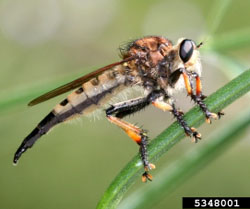
Robber flies are distinctive, medium-sized to large, bristly or hairy flies. There are over 1,000 species of robber flies (family Asilidae) in North America; and nearly 100 have been recorded from the Upper Midwest. The common name for this group comes from their ferocious manner of pouncing from the air on their prey. Various species of robber flies are common in different areas throughout North America.
Adults usually have an elongate body, with a slender and tapering abdomen, and are often hump-bodied. Most are gray, brown, or black, but a few species resemble bumble bees. Adults live about 3 months and can be seen throughout the summer. They frequent open sunny fields and are most common in semi-arid regions. They are fast and powerful fliers, able to capture insects much larger than themselves in flight. Robber flies respond to moving prey and are particularly attracted to flying insects. When disturbed or attacking prey they normally fly only
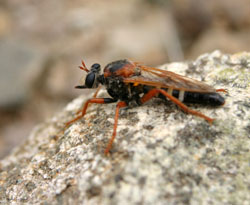
a short distance, and many produce a loud buzz when flying. The males are also quite territorial, so numbers of adults never seem great. Any stray male that wanders into another’s territory is either chased or captured.
Females deposit small, cream-colored eggs on grass or other plants, soil, bark, or wood, depending on the species. Some eggs are laid singly but most are deposited in large masses covered with a soft, chalky-white material. Some species create a shallow hole in the soil in which to lay the eggs; others place their eggs in crevices on or under the bark of trees. The small, cream-colored, cylindrical larvae live in the soil or in decaying wood, migrating around to locate prey. They pierce the body of their prey and suck the body fluids from the wound. They generally feed on eggs or any soft-bodied insects that they encounter, although some seem to specialize on grasshopper eggs or white grubs. They overwinter as larvae and pupate in the soil. The pupae come to the surface of the soil just before the adult emerges, leaving the pupal skin sticking out of the soil. The more common species require from one to three years to complete their development.
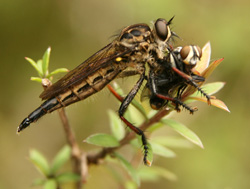
Adult robber flies are aggressive, generalist hunters. They have been recorded attacking butterflies, wasps, bees, dragonflies, grasshoppers, beetles, and other flies. Some of the larger species can inflict a painful bite if handled carelessly. Certain species frequently capture hornets or paper wasps, which are aggressive fighters themselves. At least 6 species in North America feed principally on grasshoppers. Most species, however, tend to feed more or less indiscriminately, destroying many destructive insects, but also beneficial ones such as honey bees and other pollinators. Saropogon dispar is the most injurious of a number of species in Texas that frequent apiaries – more than 700 of these flies were destroyed in one bee yard in a period of three days! Another species, Proctacanthus milbertii, is sometimes called the “Missouri bee killer,” although honey bees constitute only about 4% of its diet – the remainder is grasshoppers and moths. In the sandhills of Nebraska, P. milbertii captures nearly 2% of the adult grasshopper population daily, each consuming 1-2 prey per day. Several other species frequent flowering shrubs (such as Prunus, mockorange, or flowering sumac) where they feed on flies or wasps visiting the flowers.

The larvae of some species are reported to have a possible impact on carpenter bee, white grub and grasshopper populations. They may consume small grubs, root maggots, wireworms or other beetle larvae and insect eggs in gardens. Diogmites discolor was reported to have destroyed 12% of the Phyllophaga (white grub) population at one site in Kentucky.
Robber flies have not been used in biological control programs. Their role in natural control of pest species has not been well studied, even though they are common in some areas. Adults require sugar as well as protein before egg laying, so they may be encouraged by planting nectar-producing flowers, such as goldenrod or Queen Anne’s lace.
– Susan Mahr, University of Wisconsin – Madison
February, 2025





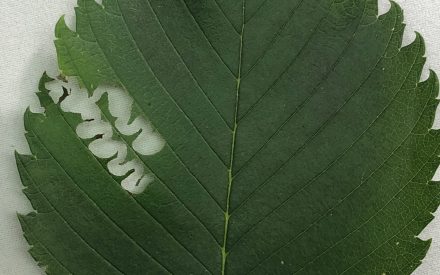 Elm Zigzag Sawfly
Elm Zigzag Sawfly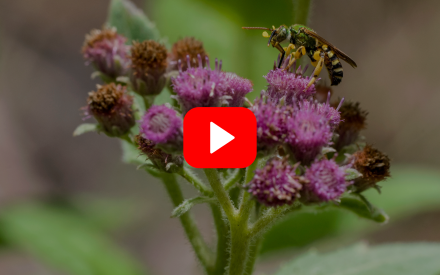 ▶ Watch: Pollinator Gardens: Plant Selection and Garden Care
▶ Watch: Pollinator Gardens: Plant Selection and Garden Care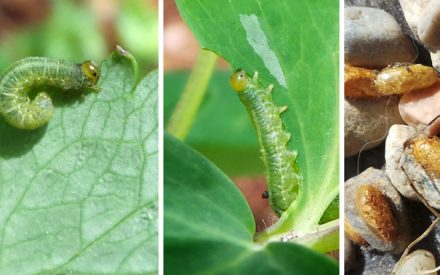 Strategies for Identifying and Managing Insect Pests
Strategies for Identifying and Managing Insect Pests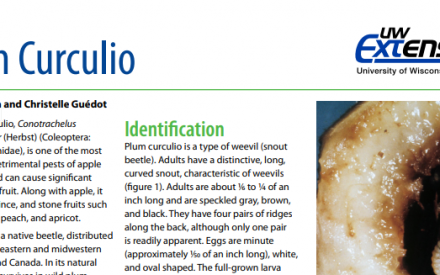 Plum Curculio
Plum Curculio


